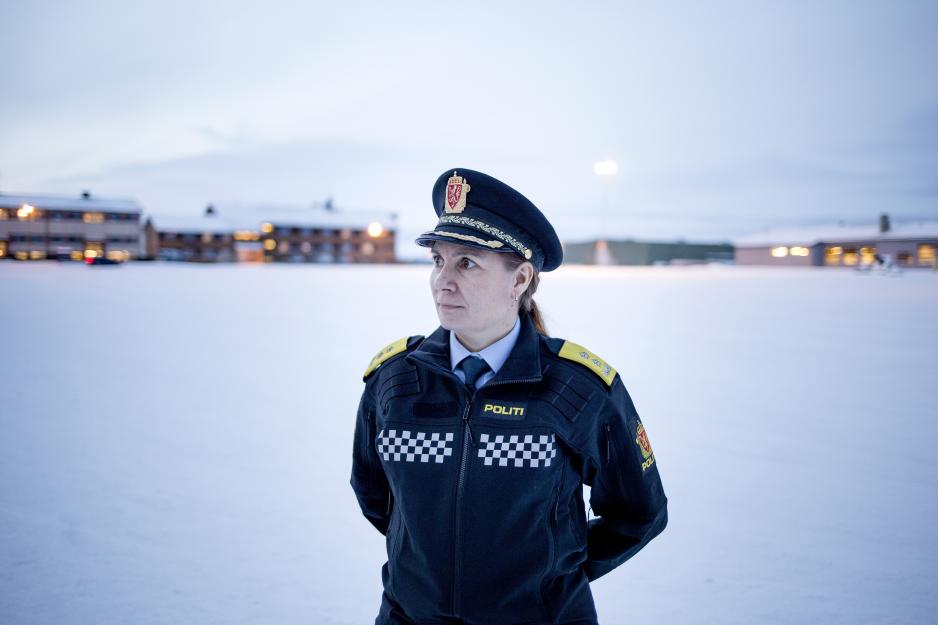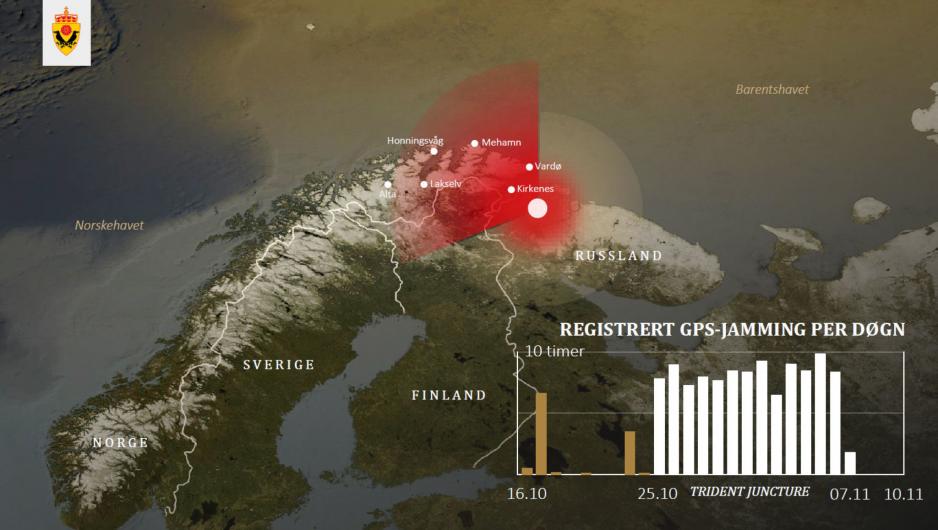The Police had to Go to the Media Before the National Police Directorate Understood the Gravity of GPS Jamming Against Norway

Ellen Katrine Hætta, Finnmark Police Chief. Photo: Eskil Wie Furunes, NRK FInnmark
“In our experience, it is a long way from Oslo to Finnmark”, says Finnmark Police Chief Ellen Katrine Hætta. When she warned against GPS jamming against Norway in 2017, there was no response from the National Police Directorate. Only when the issue hit the media did Finnmark receive assistance.
Early 2017, the Finnmark police noticed that GPS signals many places in their county infrequently disappeared. This caused problems for several civilian actors, amongst them aviation and others who depend on GPS signals to navigate the landscape. T
Finnmark Police District notified the National Police Directorate, yet received no response whatsoever, says Police Chief Ellen Katrine Hætta.
“We sent of an alarm through police channels, but nothing happened. Only when the issue hit the media did a dialogue ensue”, Hætta said at the Kirkenes Conference last week during a talk about preparedness and security in the High North.
In an interview with High North News, Hætta elaborates on the situation that arose in the winter of 2017.
“When extraordinary situations occur, we will always provide situation reports to the National Police Directorate (NPD). However, it was probably not perceived to be as serious for civilian preparedness as it actually was. What made this difficult, was the fact that this jamming was unstable and unpredictable. Things did for instance not last long enough to initiate satisfactory measuring, amongst others”.
So when you discovered this, you reported it to the NPD?
“Yes, we will always notify the NPD when there are extraordinary incidents, as we did this time. However, it was probably not perceived to be as serious as it actually was.”
Did you perceive it as serious?
“We perceive it to be serious when you can no longer trust the GPS. There are many who conduct their activities in the outback and have GPS as the only tool to aid them”, Hætta says.
High North News has requested a comment from the NPD. In a written statement, submitted through the NPD’s communication department, Section Chief of the Preparedness Section Jørn Schjelderup writes:
“The matter of GPS disturbances in Finnmark has been raised on top political level and demonstrates that such incidents are taken seriously by Norwegian authorities. The NPD maintains a close dialogue with the police districts about their local challenges perception, and assessments related to individual cases will be an issue of dialogue with the relevant police chief.”
Also exposed to ‘spoofing’
GPS jamming was first discovered in the winter of 2017 and occurred on and off throughout all of 2018. The last registered jamming in Finnmark was measured in January and February 2019.
The foreign intelligence services have pointed to Russia as the origin of the GPS disturbances. The Finnmark police, which started investigating the disturbances, concluded that they do not have any chance of moving on with the matter as Norwegian police does not have any opportunity to located where the jamming comes from.
A hitherto unknown detail in the disturbances of GPS signals in Finnmark this period is the fact that so-called ‘spoofing’ was registered too.
Spoofing is a way through which one manipulates GPS signals so that the user is tricked into believing that he or she is in another place than what is actually the case. This is an advanced technique that has been know to be used on ship traffic in the Black Sea. The consequences of spoofing can be far more serious than what is the case when GPS signals are unavailable, as erroneous navigation may cause accidents.
Hætta says there has been some low-level dialogue between Oslo and Moscow about the problem. The Finnmark police has also raised the issue of jamming in meetings with the Russian federal security service FSB in Murmansk and Petrozavodsk.
What answer did you get when you raised the issue with the FSB?
“They said this is not something they can influence in any way.”
Because?
“Because they are not familiar with the phenomenon”, says Hætta.

This his how the Norwegian foreign intelligence services believes GPS signals in Northern Norway and Northern Finland were jammed during the ‘Trident Juncture’ NATO exercise in 2018. Illustration: The Foreign Intelligence Service
2015 asylum crisis
Police Chief Hætta also warned about a potential crisis during the lead-up to what was to become the asylum seeker crisis in the fall of 2015, when nearly 5,500 migrants came on bicycles across the Norwegian-Russian border at Storskog, Finnmark and requested asylum in Norway.
That time, too, she was met with a deafening silence at the NPD in Oslo.
You tell us that the warning about GPS jamming is sent, but not perceived to be serious. Then there’s the backdrop of the asylum crisis in 2015, which was also not taken seriously at first. What does this say about the understanding of preparedness in the High North?
“It says that there is a long way between Oslo and Finnmark.”
It is not about your not being good enough to communicate the gravity?
“Perhaps that too. Perhaps one does not perceive it to be as serious as it actually is. We had cases where the ambulance planes could not land on several places along the coastline in 2018 due to jamming, says Hætta.
Why is it so far from Oslo to Finnmark?
“It is both about knowledge and about geography. The knowledge about the capacities we have and about the fact that we have limited capacity on civilian resources.
This is not frustration towards relevant authorities in Oslo?
“Well, yes, but it is also a frustration about our not being able to communicate this in a way that is good enough. And perhaps we are not able to communicate this with sufficient unanimity from the various offices involved”, says Hætta.
This article was originally published in Norwegian and has been translated by HNN's Elisabeth Bergquist.

